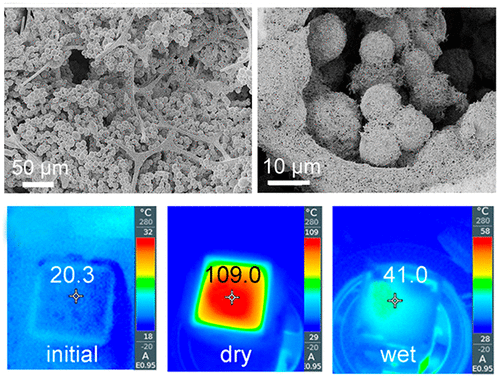Abstract
Solar-driven interfacial evaporation (SIE) has received extensive attention as a very promising desalination technique to solve the fresh water shortage crisis. However, evaporation rate decline and salt-fouling during long-term SIE seriously hinder applications of solar evaporators. Here, we report the preparation of melamine/silicone (MS) hybrid sponges with controllable microstructure and wettability for efficient SIE by further combination with carbon nanotubes (CNTs). The MS sponges are synthesized by hydrolytic condensation and phase separation of two silanes in the melamine sponge. The microstructure and wettability of the MS sponges are highly controllable by the silanes concentration. The CNTs@MS solar evaporators have a unique three-tier hierarchical macro-/micro-/nanostructure, very low thermal conductivity as well as a superhydrophilic hull and a superhydrophobic nucleus. Consequently, the CNTs@MS solar evaporators show a highly stable evaporation rate of similar to 1.75 kg m(-2) h(-1) without any salt precipitation during a long-term cyclic solar desalination of 3.5 wt % NaCl solution under 1 sun illumination. Furthermore, salt precipitation is completely hindered even during SIE of 20 wt % NaCl solution under 1 sun. The CNTs@MS solar evaporators are very promising for practical SIE because of their excellent performance and simple preparation method.

Keywords Plus:STEAM-GENERATIONWATER EVAPORATIONHIGHLY EFFICIENTSILICONE SPONGESMEMBRANESEAWATER
Published in ACS APPLIED MATERIALS & INTERFACES;10.1021/acsami.1c20734,DEC 2021


